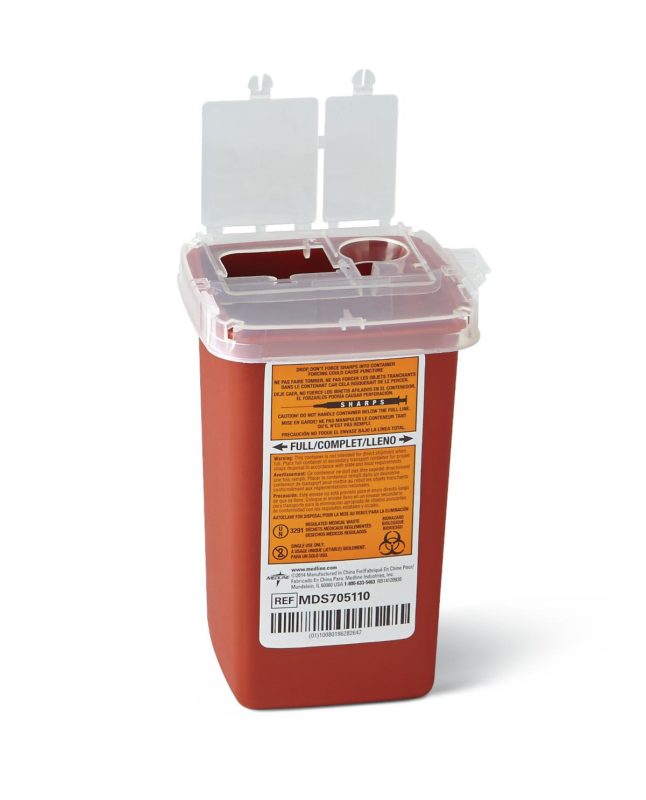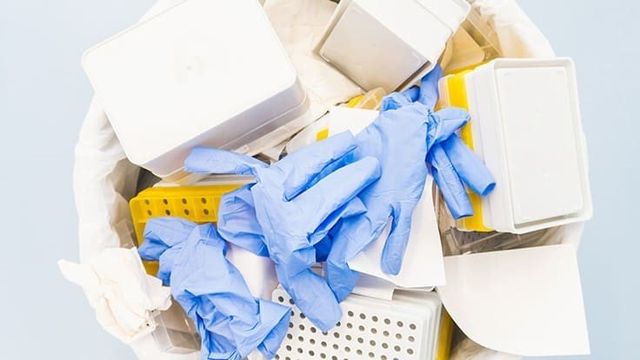Shielding Wellness: Specialist Medical Waste Removal Services for a Clean Setting
Stay Ahead of Laws: Professional Suggestions on Medical Garbage Disposal
In a globe where the health care sector is frequently advancing, it is imperative for clinical facilities to remain in advance of policies when it comes to the proper disposal of clinical waste. From comprehending the various classifications of medical waste to applying the ideal collection and segregation approaches, this conversation will certainly offer valuable understandings and actionable ideas to assist centers stay in advance of policies in the ever-changing landscape of clinical waste disposal.
Comprehending Clinical Waste Categories
Understanding clinical waste categories is essential for appropriate disposal and management in health care centers. Medical waste describes any waste created by healthcare tasks that might pose a risk to public wellness or the atmosphere. It is critical to categorize clinical waste properly to ensure its risk-free handling, transport, treatment, and disposal.
There are several categories of clinical waste that medical care facilities need to be knowledgeable about. One of the most common classifications consist of transmittable waste, pathological waste, sharps waste, pharmaceutical waste, and chemical waste. Each category has particular standards and laws for its proper management and disposal.
Contagious waste consists of products infected with blood or various other physical fluids, such as gloves, gowns, and laboratory cultures. Pathological waste refers to human cells, body organs, or body components that call for unique handling and disposal. Sharps waste consists of made use of needles, syringes, and various other sharp objects that can cause injury and transfer infections. Pharmaceutical waste makes up ended, unused, or polluted medications that require cautious handling and disposal. Chemical waste includes solvents, disinfectants, and other chemical substances used in health care centers.
Staying Up-To-Date With Regulatory Adjustments
Remaining present with regulative adjustments is essential for healthcare facilities to make certain compliance and proper monitoring of clinical waste disposal. medical waste removal services. With policies continuously evolving, it is crucial for medical care facilities to remain current to prevent charges, fines, and potential damage to the atmosphere and public health
To remain ahead of governing modifications, healthcare centers must establish a system for surveillance and tracking updates. This can be done by subscribing to governing newsletters, attending workshops and conferences, and proactively taking part in sector associations. Additionally, centers should assign a personnel or team accountable for staying notified and disseminating info to relevant stakeholders.
Routine interaction with regulatory firms is additionally important. Healthcare facilities need to establish relationships with regional, state, and federal agencies to guarantee they are aware of any type of changes in guidelines that might impact their waste administration techniques. This can be done through routine conferences, participation in public comment durations, and aggressive engagement with regulative companies.
Moreover, health care facilities must consider partnering with waste monitoring companies that concentrate on medical garbage disposal (medical waste disposal services with WasteX). These business are usually well-versed in the most current laws and can provide assistance and support to make sure conformity
Applying Correct Collection and Segregation Methods
To efficiently handle medical waste disposal, health care facilities need to develop appropriate collection and segregation techniques based on regulative guidelines. Carrying out these approaches makes certain the risk-free handling and disposal of potentially unsafe materials, safeguards the setting, and lessens the risk of injuries and infections to medical care workers and the general public.
Appropriate collection and partition techniques include using assigned containers and labeling systems. Healthcare centers more helpful hints need to give plainly identified containers for different types of medical waste, such as sharps, infectious waste, pharmaceutical waste, and non-hazardous waste. These containers should be color-coded and plainly significant to prevent confusion and advertise very easy identification.
Additionally, healthcare centers must train their personnel on the appropriate treatments for collecting and setting apart medical waste. This consists of educating them on the different kinds of waste, the ideal containers to use, and the importance of following standards and guidelines. Normal training sessions and refresher courses should be conducted to make certain that personnel continue to be updated on ideal methods.
Additionally, healthcare centers should develop a system for regular collection and disposal of clinical waste. This may involve partnering with qualified waste management business that specialize in clinical garbage disposal. These companies will certainly ensure that the gathered waste is carried and dealt with in conformity with governing demands.
Picking the Right Disposal Methods

Incineration is among one of the most efficient and typical approaches for getting rid of specific kinds of medical waste, such as pathological waste and sharps. It involves the controlled combustion of waste at heats, minimizing it to ash. Nevertheless, incineration can launch unsafe toxins right into the air and add to air contamination.

Chemical treatment involves the usage of chemicals to neutralize the waste and sanitize. Microwave therapy makes use of microwave energy to heat and decontaminate the waste.
Making Sure Conformity With Documents and Training
After thoroughly taking into consideration the suitable disposal approaches for medical waste, health care facilities must ensure conformity with policies and reduce ecological effect by implementing reliable his comment is here paperwork and training procedures. This step is crucial in maintaining a sustainable and safe setting for both medical care employees and the public.

Healthcare workers who manage clinical waste must get proper training on waste partition, taking care of, and disposal treatments. By giving comprehensive training, healthcare facilities can empower their staff to make informed choices and lessen the danger of incorrect waste disposal.
Final Thought
To conclude, staying ahead of policies in medical garbage disposal is crucial for healthcare centers. medical waste removal. Understanding the various classifications of medical waste, staying upgraded with governing modifications, executing proper collection and partition approaches, selecting the suitable disposal methods, and ensuring conformity via paperwork and training are all important steps. By complying with these guidelines, healthcare organizations can properly handle and dispose of clinical waste in a secure and accountable way
From understanding the various classifications of medical waste to carrying out the best collection and segregation techniques, this discussion will certainly offer beneficial understandings and actionable ideas to help centers stay in advance of regulations in the ever-changing landscape of clinical waste disposal. - medical waste disposal services with WasteX
The most typical categories consist of infectious waste, pathological waste, sharps waste, pharmaceutical waste, and chemical waste. Medical care facilities ought to give clearly identified containers for various kinds of medical waste, such as sharps, transmittable waste, pharmaceutical waste, and non-hazardous waste. Healthcare centers need to establish an extensive system to videotape and track all aspects of clinical waste disposal, consisting of kinds of waste created, amounts, and disposal approaches made use of. Medical care employees that handle medical waste ought to receive suitable training on waste partition, handling, and disposal treatments.